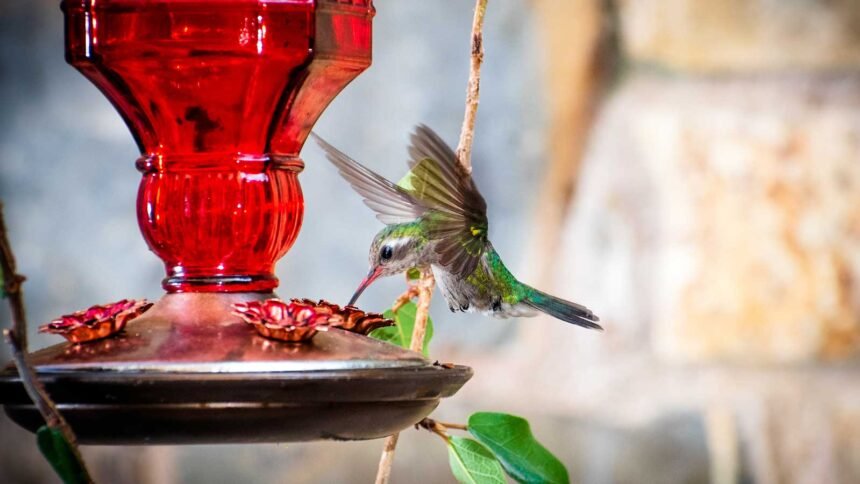Hummingbirds, with their iridescent feathers and graceful flight, are a delight to behold. If you’re eager to attract these tiny marvels to your outdoor space, placing a hummingbird feeder is a great way to do so. However, finding the ideal location for your feeder is crucial to ensure its effectiveness and the safety of the birds. In this article, we’ll explore the essential factors to consider when determining the best spot for your hummingbird feeder.
- Understanding Hummingbird Behavior:
Before selecting a location for your feeder, it’s essential to understand the behavior of hummingbirds. These birds are attracted to bright colors, particularly red and orange, and they have a keen sense of sight. They also prefer feeding in areas with easy access to perches and shelter.
- Sun and Shade:
Hummingbirds thrive in areas with ample sunlight, as it provides warmth and energy. Choose a location for your feeder that receives partial sunlight throughout the day, preferably in the morning when the birds are most active. However, ensure there is also some shade available to prevent the nectar from spoiling too quickly in the heat.
- Protection from Wind:
Strong winds can make it challenging for hummingbirds to feed comfortably. Hang your feeder in an area protected from gusts of wind, such as near a building or under the cover of trees or shrubs.
- Visibility and Accessibility:
Place your feeder in a spot where you can easily observe it from indoors, such as near a window or patio. This allows you to enjoy watching the hummingbirds without disturbing them. Additionally, ensure that the feeder is easily accessible for refilling and cleaning to maintain its hygiene.
- Distance from Windows:
To prevent bird collisions with windows, position your feeder at least 10 feet away from any windows or glass surfaces. If this isn’t possible, consider applying window decals or installing window screens to make the glass more visible to the birds.
- Natural Perches:
Hummingbirds like to perch nearby while they wait for their turn to feed. Place your feeder near natural perches such as small trees, shrubs, or flowering plants where the birds can rest between feeding sessions.
- Height Off the Ground:
Hang your feeder at a height of about 5 to 6 feet above the ground. This height makes it easily accessible for you to refill and clean while also deterring predators such as cats.
- Quiet and Peaceful Environment:
Avoid placing your feeder in busy or noisy areas, as hummingbirds prefer quiet and peaceful surroundings. Choose a location away from high-traffic areas, doorways, or where children and pets play.
- Away from Competing Feeders:
If you have multiple feeders in your yard, space them out to reduce competition among hummingbirds. Each feeder should be out of sight of the others to minimize territorial disputes.
- Near Flowering Plants:
While not necessary, positioning your feeder near flowering plants that attract hummingbirds can enhance its appeal. This creates a natural feeding habitat and ensures a diverse food source for the birds.
Conclusion:
Finding the perfect spot for your hummingbird feeder requires careful consideration of various factors, including sunlight, wind protection, visibility, and accessibility. By following these guidelines and observing the behavior of hummingbirds in your area, you can create an inviting environment that attracts these enchanting birds to your outdoor space. With a well-placed feeder, you’ll have the pleasure of watching these tiny aerial acrobats up close and enjoying their visits throughout the day.

